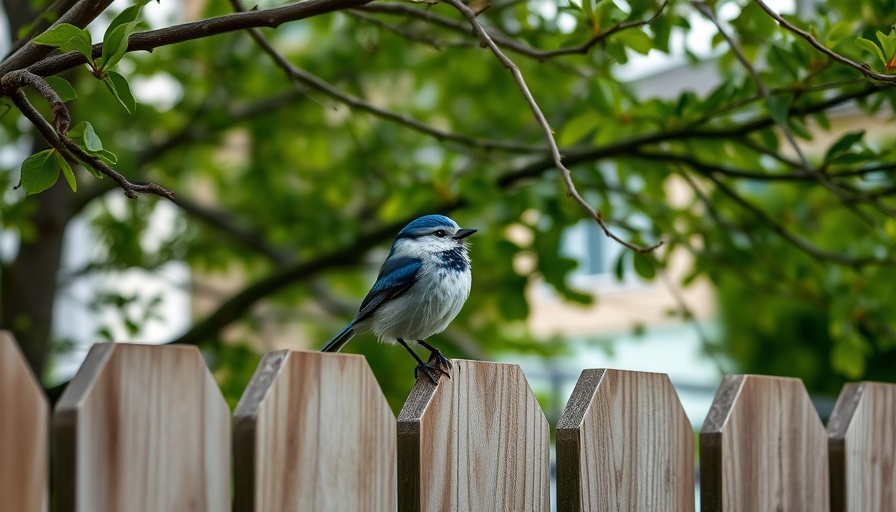
The Complex Ecosystem of Humans and Paper Wasps
Understanding the delicate relationship between humans and paper wasps requires an appreciation of the role these insects play in the ecosystem. Often misunderstood and unfairly vilified, paper wasps initiate vital ecological interactions that contribute to a balanced garden environment. Homeowners, especially those eager to nurture their gardens, should consider these creatures not just as pests but as allies in pest control and pollination.
Why Paper Wasps Matter in Your Garden
Interestingly, paper wasps are less aggressive than many might assume. Unlike yellowjackets, these wasps tend to focus more on foraging and maintaining their nests than on stinging humans. A study reported in the Journal of Insect Behavior highlighted their role as effective predators, often hunting caterpillars that would otherwise decimate plants in gardens. Thus, fostering a friendly environment for paper wasps may promote a healthy garden.
Historical Context: Humans and Paper Wasps
The coexistence of humans and wasps has deep historical roots. For centuries, different cultures have appreciated wasps for their pest control abilities. For instance, many traditional farming techniques included encouraging natural wasp populations as a means to manage harmful insects. By restoring this ancient wisdom, modern gardeners can find sustainable ways to manage their gardens while respecting their buzzing neighbors.
Reassessing Our Views: Misconceptions About Wasps
One common misconception is that all wasps are particularly dangerous. This stems from the aggressive nature of certain species when their nests are threatened. However, most wasps, including paper wasps, are not inherently hostile unless provoked. Education about their behavior can encourage a more harmonious living situation. This education can also mitigate unnecessary exterminations of wasps, which could destroy valuable pollinator populations.
Future Predictions: Ecological Impact and Garden Health
As the trend towards organic gardening and ecological sustainability grows, the relationship between homeowners and wasps is expected to evolve. More homeowners are seeking eco-friendly solutions for pest control, which will likely lead to an increased awareness and acceptance of wasps in residential spaces. This shift underscores the importance of incorporating wasps into landscape management, ultimately benefiting the overall health of local ecosystems.
Practical Insights: Creating a Welcoming Environment
To foster a peaceful coexistence with paper wasps, homeowners can implement a few strategies: first, avoid unnecessary extermination of nests; second, cultivate plants that attract wasps, such as fennel and dill; and lastly, educate family members about the value of these insects. By adopting a proactive approach, residents can enjoy a resilient garden ecosystem.
Community Engagement: Connect and Share Knowledge
Engaging with local gardening communities can enhance understanding and appreciation for wasps. By collaborating with neighbors, homeowners can share strategies and experiences on how to coexist peacefully with these pollinators. Community workshops and online forums can be instrumental in dispelling myths and fostering an environment that values biodiversity.
Final Thoughts: Cultivating Respect for Nature
In conclusion, the relationship between humans and paper wasps is an intricate one, full of potential for mutual benefit. Understanding their ecological importance and reevaluating our perceptions can pave the way for coexistence. As gardeners and homeowners, we have the responsibility to not only protect our own environments but also to respect the roles that even the smallest creatures play in a healthy ecosystem.
Next time you encounter a paper wasp, consider its contributions before reaching for the insecticide. Together, we can cultivate a harmonious space that celebrates nature in all its forms.
 Add Row
Add Row  Add
Add 




Write A Comment